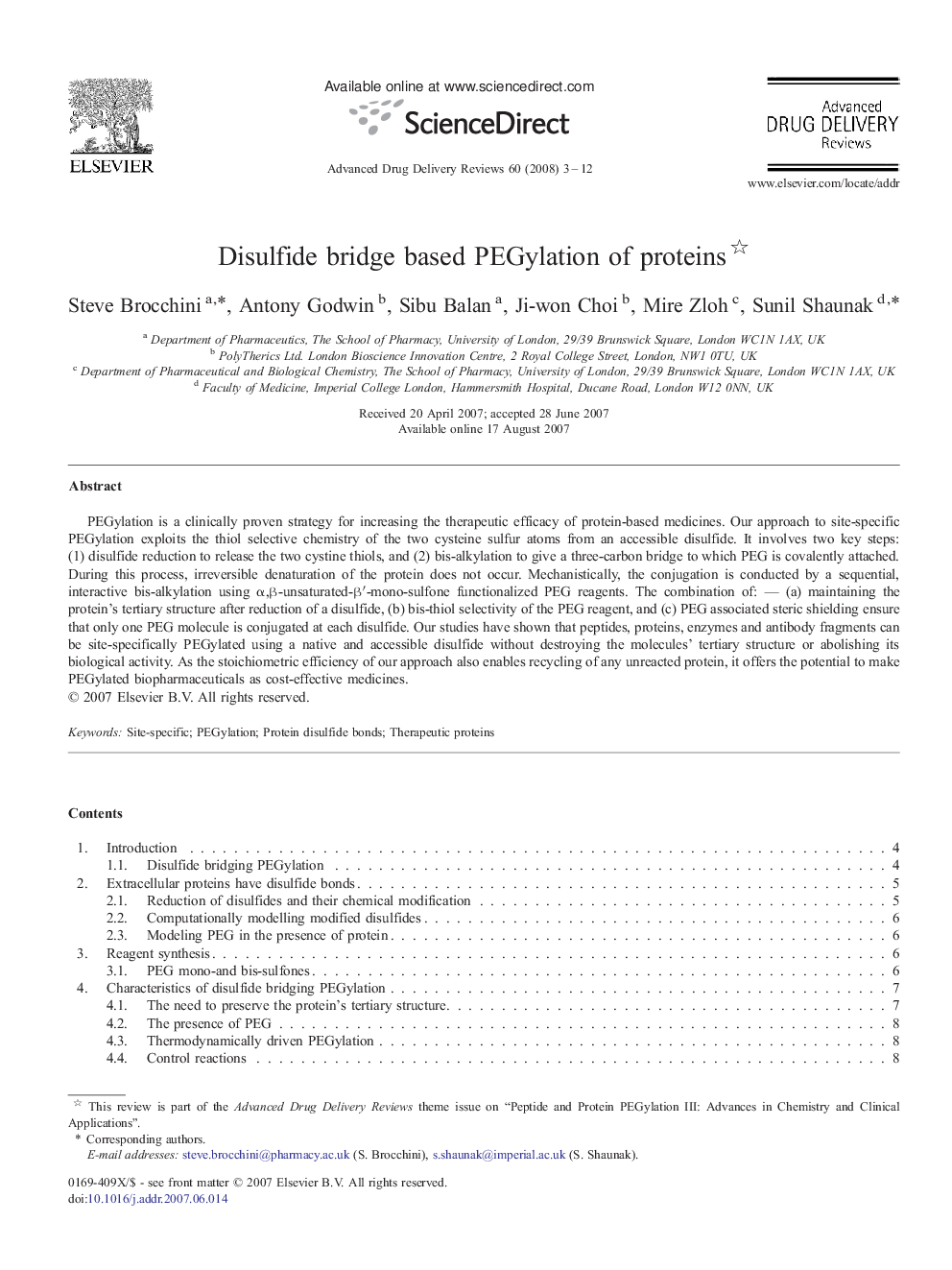| Article ID | Journal | Published Year | Pages | File Type |
|---|---|---|---|---|
| 2071991 | Advanced Drug Delivery Reviews | 2008 | 10 Pages |
PEGylation is a clinically proven strategy for increasing the therapeutic efficacy of protein-based medicines. Our approach to site-specific PEGylation exploits the thiol selective chemistry of the two cysteine sulfur atoms from an accessible disulfide. It involves two key steps: (1) disulfide reduction to release the two cystine thiols, and (2) bis-alkylation to give a three-carbon bridge to which PEG is covalently attached. During this process, irreversible denaturation of the protein does not occur. Mechanistically, the conjugation is conducted by a sequential, interactive bis-alkylation using α,β-unsaturated-β′-mono-sulfone functionalized PEG reagents. The combination of: — (a) maintaining the protein's tertiary structure after reduction of a disulfide, (b) bis-thiol selectivity of the PEG reagent, and (c) PEG associated steric shielding ensure that only one PEG molecule is conjugated at each disulfide. Our studies have shown that peptides, proteins, enzymes and antibody fragments can be site-specifically PEGylated using a native and accessible disulfide without destroying the molecules' tertiary structure or abolishing its biological activity. As the stoichiometric efficiency of our approach also enables recycling of any unreacted protein, it offers the potential to make PEGylated biopharmaceuticals as cost-effective medicines.
